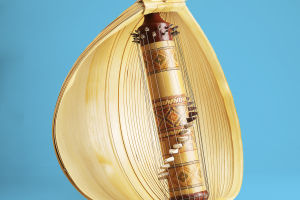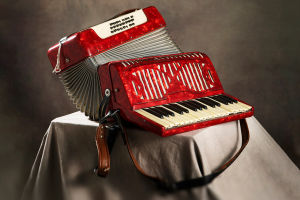In the process of learning guitar, many novices will encounter the problem of finger pain when pressing chords.
This pain may affect their practice results and even make them want to give up. However, this pain can be alleviated through some methods and techniques.
First, when novices first start learning guitar, the skin on the fingertips is relatively soft, and pressing the strings will cause obvious pain. To alleviate this pain, novices can gradually increase their practice time.
Beginners can practice for 10 to 15 minutes a day to gradually adapt their fingers to the pressure of the strings. After a few weeks, the skin on the fingertips will gradually thicken, and the pain will be reduced.
Additionally, between practice sessions, soaking fingers in ice water for a few minutes can relieve pain and accelerate skin healing.
Secondly, the correct string-pressing posture is also crucial for relieving pain. When pressing chords, novices should try to press the strings with their fingertips rather than the belly of their fingers. This reduces the area of contact between the fingers and the strings, thereby reducing pain.
At the same time, the fingers should be perpendicular to the strings to ensure that each string can be pressed accurately without generating noise. Beginners can find the most suitable posture for pressing the strings through repeated practice and adjustment.
Choosing the right guitar and strings can also effectively relieve finger pain. When selecting a guitar, novices can opt for one with a thinner neck and less string tension, so that less force is required when pressing the strings, reducing the burden on the fingers.
Additionally, novices can choose thinner strings, which require less pressure to press. There are guitars and strings designed specifically for beginners on the market, and novices can select them based on their needs.
Furthermore, reasonable practice methods can also help relieve finger pain. When practicing, novices should pay attention to the combination of work and rest and avoid practicing continuously for long periods.
When fingers feel noticeable pain, it is essential to rest in time to prevent excessive use and potential finger injuries. Beginners can devise a reasonable practice plan, practicing in multiple sessions throughout the day and limiting each session to 30 minutes. This approach ensures effective practice while reducing finger pain.
Lastly, when learning guitar, novices can use auxiliary tools to relieve finger pain. For instance, there are finger sheaths designed specifically for guitarists that can effectively reduce friction and pressure when pressing strings, alleviating finger pain.
Additionally, some beginners might apply skin-protecting ointments on their fingertips to accelerate skin healing and relieve pain.
Finger pain when pressing chords is a common problem in learning guitar, but it can be effectively managed through gradual increases in practice time, proper string-pressing posture, selecting the right guitar and strings, reasonable practice methods, and using auxiliary tools.
After overcoming the initial pain, novices will be able to enjoy playing guitar more and gradually improve their playing level. Hope the methods and techniques provided in this article can help novices smoothly pass this stage and move toward a new milestone in guitar learning.

